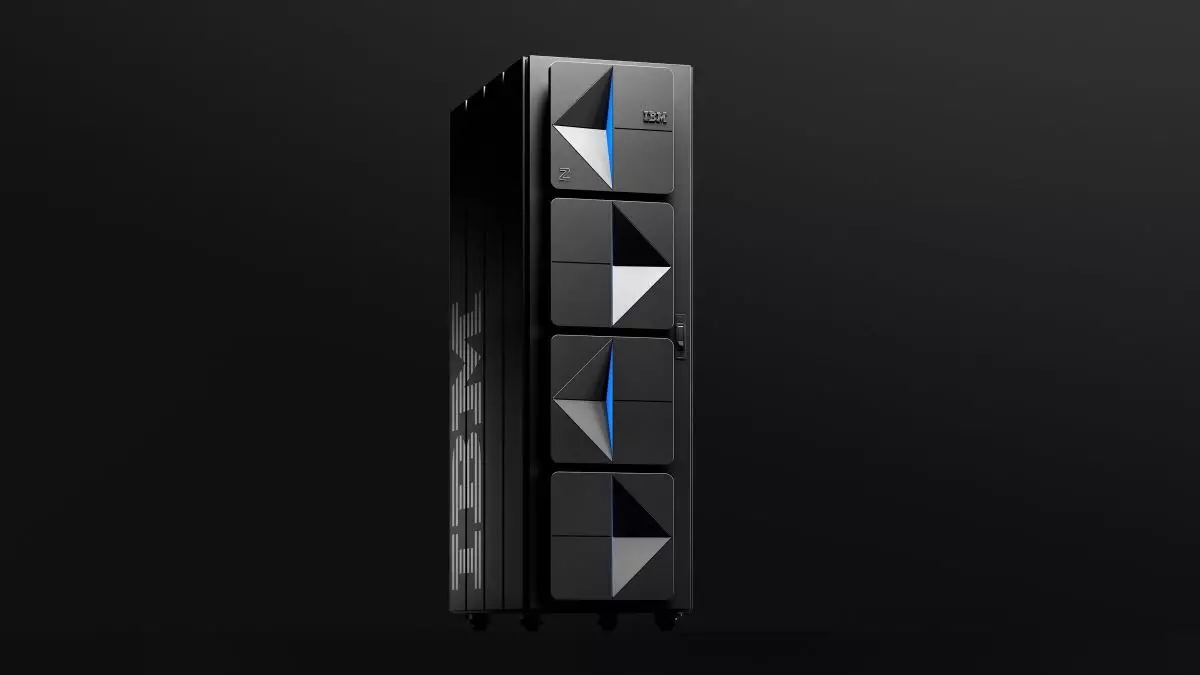In a world where speed and efficiency are paramount, IBM has taken a bold step forward with the release of its z17 mainframe computer. Newly designed to cater to the growing surge of artificial intelligence (AI) applications, the z17 arrival feels both timely and transformative. As businesses scramble to integrate AI capabilities, IBM’s innovative hardware paves the way for an accelerated journey into this next technological frontier. While the concept of mainframes may conjure images of outdated technology, the reality is that these robust systems are firmly planted at the core of modern enterprise computing, leveraged by nearly 71% of Fortune 500 companies.
AI at Scale: The Telum II Processor
The z17 showcases its power through its cutting-edge IBM Telum II processor, which allows the machine to execute an astounding 450 billion inference operations daily—effectively a 50% improvement over its predecessor, the IBM z16. These performance metrics signal a formidable leap in computing capability, especially within an era where AI thrives on data processing. This isn’t just an upgrade; it’s a reimagining of what a mainframe computer can do in the AI landscape. The z17 is engineered to handle more than 250 distinct AI use cases, making it a versatile choice for enterprises aiming to implement AI-driven solutions, from generative AI to intelligent agents.
Consultation: A Blueprint for Success
The development of the z17 has been meticulous, orchestrated with input from over 100 clients during a robust five-year feedback collection phase. Tina Tarquinio, the VP of product management for IBM Z, highlights that the early input proved prescient, aligning closely with the rapid developments in AI that emerged after OpenAI’s ChatGPT launched in November 2022. The company’s ability to anticipate and integrate market trends into their hardware design suggests not only technological foresight but also a genuine commitment to creating solutions that resonate with customer needs. This kind of customer-centric approach could serve as a pivotal lesson for other tech enterprises hoping to adapt in an ever-evolving industry.
Building Flexibility for Future Growth
One of the standout features of the z17 is its architecture designed to remain flexible amidst a dynamic market landscape. The initial launch will support 48 IBM Spyre AI accelerator chips but is constructed with scalability in mind, with plans to double that capability within a year. This level of foresight in technology infrastructure is indicative of a broader understanding that the rapid evolution of AI demands not only power but also adaptability. Tarquinio’s comments on “AI agility” underscore the necessity of creating systems that can support emerging AI models and workloads, ensuring that the z17 remains relevant, regardless of future advancements.
A Green Revolution: Energy Efficiency
Beyond performance improvements, the z17 is also setting benchmarks in energy efficiency. With claims of an increase in AI acceleration by seven and a half times while consuming five and a half times less energy than equivalent models from competitors, IBM clearly understands the importance of sustainable technology in modern society. This push for energy efficiency not only aims to reduce operational costs but also aligns with growing environmental concerns that have come to define global corporate responsibility. As companies rush to innovate, the conscious effort to minimize energy consumption illustrates an evolving perspective that transcends mere technological capability, focusing instead on a holistic view that values ecological sustainability.
The IBM z17 is not just another mainframe; it’s a strategic tool tailored for the future of AI. As businesses navigate this transformative landscape, the z17 stands tall as a pivotal cog, capable of driving organizations forward faster and more efficiently than ever before. With its impressive specifications and focused design, IBM has laid the groundwork for the next significant evolution in computing, ensuring that enterprises are well-equipped to face the unknown challenges that lie ahead.

